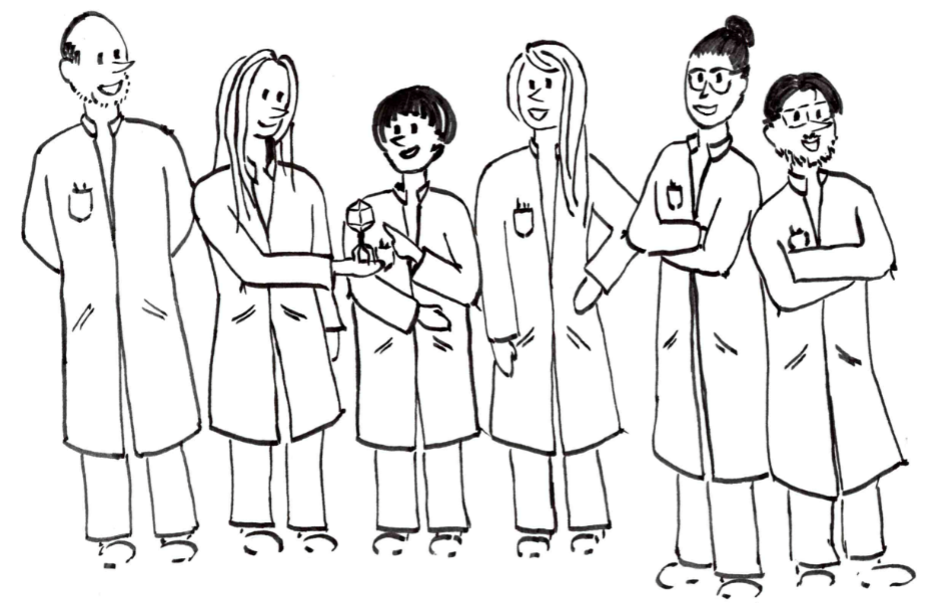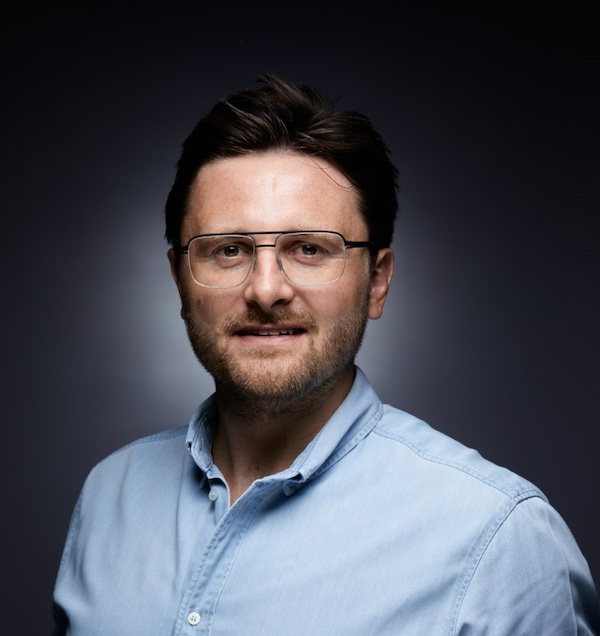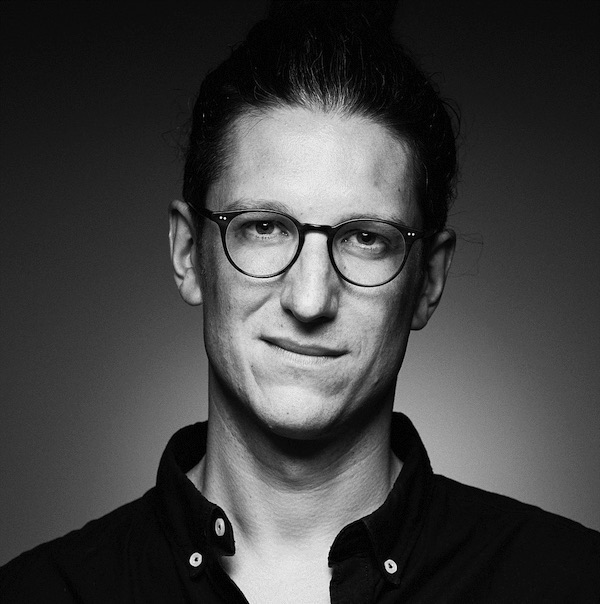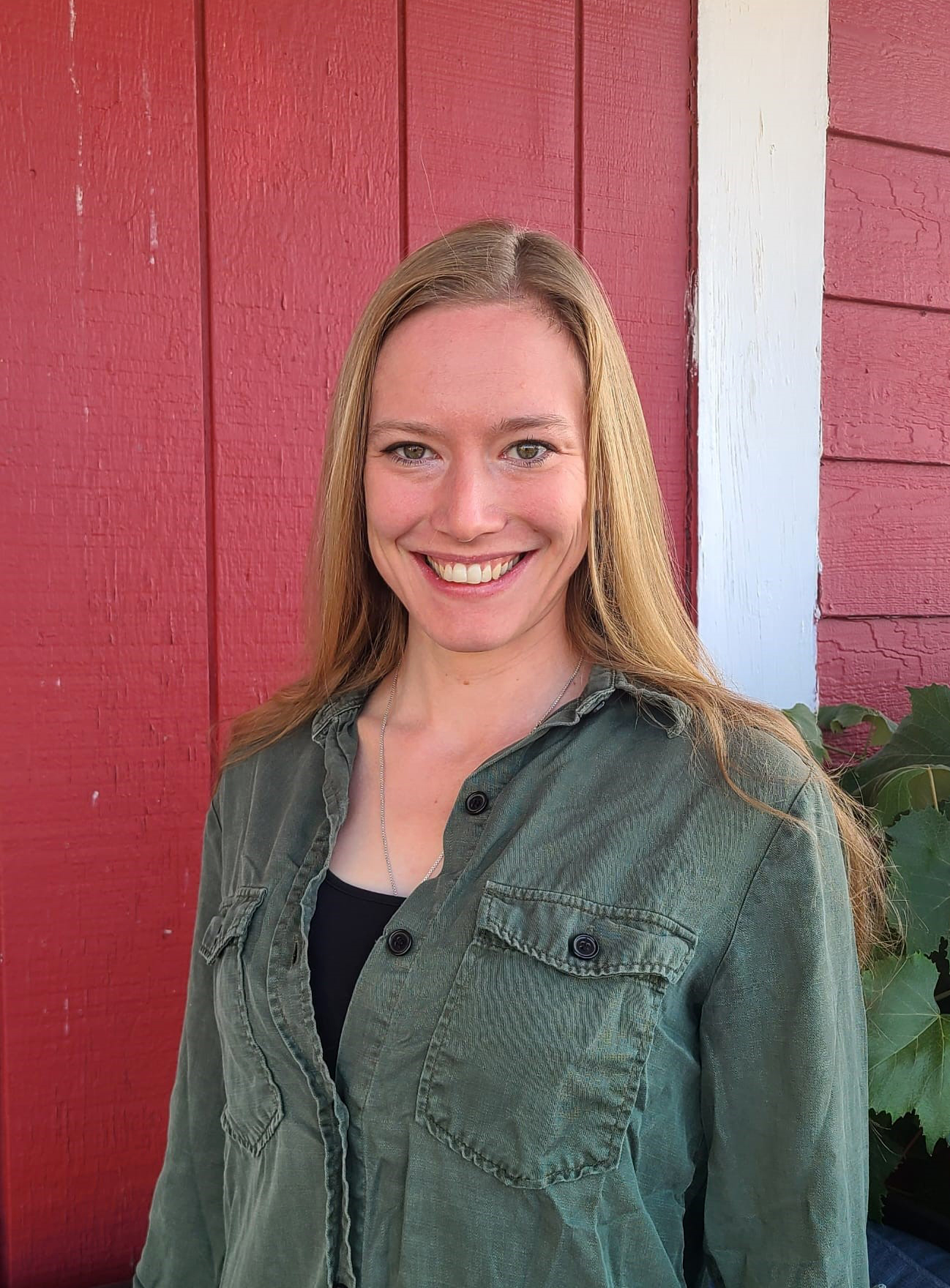Recently, the phage engineering team within the group of Prof. Martin Loessner at ETH Zurich have published back-to-back articles describing a phage-based diagnostic tool and an innovative therapeutic approach to tackle urinary tract infections using engineered phages (Meile et al. and Du et al.). Here, the main contributors to these studies (first authors Jiemin Du and Susanne Meile; last authors Matthew Dunne and Samuel Kilcher) reflect on the last three years of developing genetic tools, characterizing phages during lockdown, and becoming acquainted with the many wonderful smells and colors of human urine!
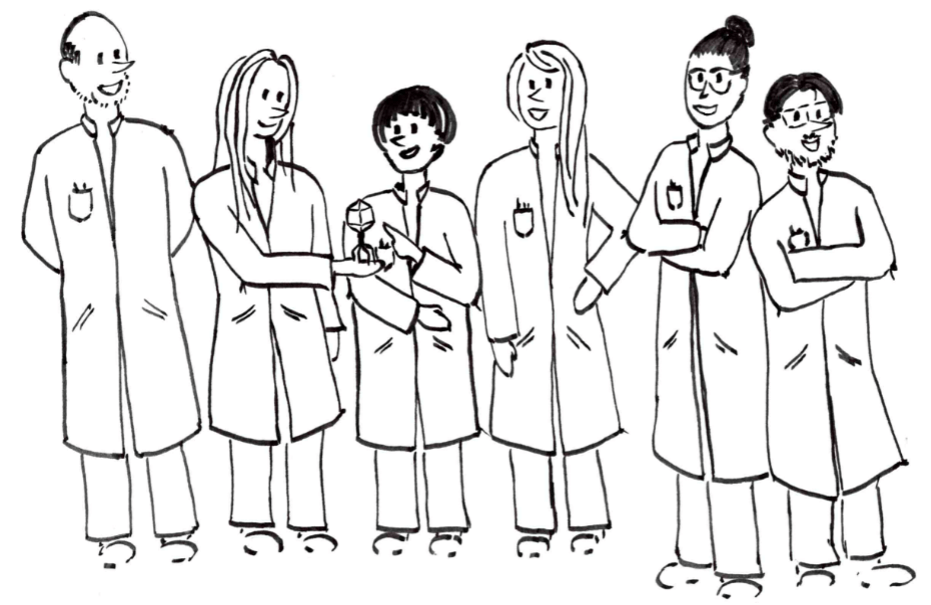
Picture one. The Swiss Phage Engineers! (L to R) Prof. Martin J. Loessner, Alexandra Svorjova, Jiemin Du, Dr. Susanne Meile, Dr. Sam Kilcher, Dr. Matt Dunne. Cartoon by Zoé Kürsteiner, ETH Zurich.
Question: Could you briefly explain the background and motivation behind the research project?
Sam Kilcher: Our project was driven by clinical need: In 2019, we were introduced to Prof. Thomas Kessler, Head of Neuro-urology at the Balgrist University Hospital in Zurich. Thomas and his team were completing their phage clinical trial in collaboration with the Eliava Institute and clinicians in Tbilisi (link) and were motivated to work with us on establishing new treatment paradigms for their patients in Switzerland, many of which suffer from recurrent, drug-resistant bladder infections. Thomas had read our literature on the potential of engineered phages (link, link, link) and was convinced that we could deliver an improved solution. Our project, CAUTIphage, was awarded ~$3.4 M through the Swiss National Science Foundation and kicked off around Spring 2020. We were faced with the task of quickly coming up with a viable, engineered phage-based strategy to treat those pesky catheter-associated urinary tract infections (CAUTIs)… but hey, no pressure, right?
Question: Could you highlight the key findings or outcomes of the research?
Susanne Meile: Once we found broad-range therapeutic phages against the top three uropathogens, we had to develop techniques to modify their genomes. While such tools are available for some model phages like T4, it was trickier to work with actual therapeutic phages. In the end, we found success using CRISPR-Cas counterselection tools as well as synthetic approaches with Gibson assembly. As a simple way to verify our engineering pipelines, we first introduced nanoluciferase as a reporter gene into each phage and quickly realized that the resulting reporter phages were great at detecting very low uropathogen numbers in urine with excellent specificity. This prompted us to develop sets of reporter phages for a point-of-care diagnostic straight from patient urine within 4 to 5 hours (much faster than conventional culture-based method). By adding these reporter phages to fresh urine from the clinics, we could also predict which patient could potentially benefit from personalized phage therapy as a companion diagnostic.
Jiemin Du: The main goal of this work is to address the two major therapeutic limitations of natural phages, namely their limited host ranges and the development of phage resistance by the target bacteria. After many trials of engineering different payloads into our phages we were especially impressed by the use of heterologous effector proteins, especially bacteriocins and cell wall hydrolases. Upon phage infection these payloads are produced and released with progeny phages to exert secondary antimicrobial effects to enhance and complement phage-mediated killing. We used urinary infections as a model to demonstrate how our engineered phages could clear polymicrobial communities and suppress bacterial resistance development both in vitro and ex vivo (in real-world patient urine). It’s pretty awesome to see a single E. coli phage able to take down Enterococcus or Klebsiella too!
Question: What were some of the major challenges you encountered during the research process?
Matt Dunne: Oh, there were quite a few… well, as with all lab projects, I guess! However, I’d say one of the biggest challenges was simply landing on what the ideal effector payload was going to be for us. We narrowed ourselves down to testing only proteinaceous effectors (as they should be amenable to phage expression), yet that still left a plethora of interesting payloads to try out, with each capable of a different antimicrobial effect. In the end, we had our eureka moment with bacteriocins and endolysins! The bacteriocins have proven to be incredibly potent heterologous effectors. We also devised some neat ways to tackle effector genetic stability and engineered phage production too. Another fun challenge was establishing our Zurich Uropathogen Collection of patient isolates (>660 collected). This was done during the 2020 COVID situation which made things quite a bit more difficult. Anyway, we were able to navigate through this huge task thanks to the incredible support of some truly awesome bachelor and master students who joined us on the project.
Question: Could you elaborate on the team dynamics underlying this collaborative project?
Sam: It would not have been possible without a shared passion and incredible team spirit. Everyone felt the pressure to deliver a new engineering strategy within just two years (that’s what we promised in the grant application after all!). When we started, we didn’t even have the required engineering technology ready for any of the uropathogens… or any suitable phages for that matter. At the same time, there were many uncertainties linked to the pandemic, which could have slowed us down. In many ways, I think that CAUTIphage was our COVID coping mechanism and the whole team gave it 200%, including many undergraduate students, and our enormously supportive clinical partners at the Balgrist (Lorenz Leitner, Shawna McCallin, and Thomas Kessler, and the rest of the Balgrist team) and the IMM (Hendrik Koliwer-Brandl). Sort of like a rollercoaster ride, it was exhilarating and exhausting at the same time!
Question: On a personal level, what did you learn during the course of these projects?
Jiemin: Throughout the course of these projects, I’ve trained myself in effectively communicating complex scientific concepts to diverse audiences. While those of us in the field of phage biology recognize the potential of phages as therapeutics in addressing antibiotic resistance, it’s essential to bridge this understanding with others who might hold different opinions. Over my three-year PhD journey, I’ve actively participated in various meetings and conferences, where I’ve not only showcased our work but also elucidated the scientific underpinnings to medical professionals, nurses, patients, and the public. Advocating that “viruses do not only kill but also cure” has been the central theme. Believe it or not, I found that explaining my research to friends and family, especially during the COVID viral pandemic, required much more effort than communicating with the scientific community.
Susanne: I had to learn to simultaneously manage many tasks under significant time pressure (e.g., preparing phages for experimental treatments, conducting field evaluations, engineering phages, and writing manuscripts at the same time). This requires good organization, clear communication, comprehensive documentation, and the ability to delegate the lab workload, for example working closely with many of our talented undergrad students who performed their thesis work as part of the overall project.
Matt: For me this project drove home how important collaboration with the right people is. No one can be the master of everything (even if as academics we do try sometimes!) and I was fortunate to have so many experienced lab members around me to help share the workload. For instance, technically I’ve learnt so much from Sam, Susanne, and Jiemin, such as little tips and tricks with CRISPR-Cas engineering and primer design, or how to nail that perfect reporter phage assay! Working closely with clinicians has also exposed me to the real-world side of where our research is heading, especially as we approach clinical trials to try and help patients suffering from UTIs and other infections. This larger perspective can sometimes be forgotten when we are focused on only the lab work but keeping that bigger picture in mind was motivating and a game-changer, as we were always on the lookout for ways to improve phage formulations or take dosage strategies into account as early as possible, which translated back into improvements to our experiments and lab-based models.
Sam: I had to learn to manage self-expectations, particularly when the pressure is high. In addition, I experienced how essential a functional team is for the success of any operation and how powerful and motivational a little fun at the workplace can be. I think you must give it your very best, but not always take it too seriously… otherwise you are at risk of burning out quickly.
Question: Where do you see the research heading in the future, and what are the next steps?
Matt: There is no rest for these phages as we translate our findings into clinical trials with the hope of providing an alternative therapy for patients suffering from UTIs. I am fortunate and very excited to be involved in this next step as we approach production and all the preclinical work. Regarding our phage engineering platforms in general, we are now leveraging the strategies developed over the years to produce phages with novel immunomodulatory properties in new projects in Zurich, such as our ImmunoPhage project (link), which is developing a completely different approach to killing bacteria. In general, the field of genetic engineering presents so many possibilities, and I’m keen to see how we and our fellow researchers around the world are going to develop even better engineering tools and make all sorts of new inventions, phage-based therapeutics, and diagnostic agents. It was also a proud moment for me recently to see Designer Phages recognized as a top emerging technology of 2023 by the World Economic Forum. Both engineered and natural phages have immense potential, and I have no doubt that the multiple clinical trials running currently are going to further solidify their place as viable medicines in the clinics of the future.
Question: What advice would you give to young researchers interested in pursuing similar projects?
Jiemin: Communication is the key. While this is your own PhD project, it does not necessarily mean you are fighting the battle alone. Pursuing interdisciplinary projects like ours requires materials and information from so many different fields such as genetic engineering, protein biology, clinicians, all the way to understanding routine urine collection and analysis. There is no way you can become an expert in all of them. Chatting and throwing ideas or thoughts around with your project partners or discussing problems and showing people any odd observations from your experiments is the easiest way to save time and effort. I also highly recommend active participation in conferences, treating them as invaluable opportunities for cross-pollination of ideas. Engaging in discussions with peers across diverse scientific realms often leads to the inception of innovative ideas. Furthermore, these events provide a platform to stay abreast of the latest advancements in experimental techniques.
Susanne: A week in the library can save a month in the lab. I would advise conducting solid preliminary research and making concrete plans before starting any hands-on experiments. For example, we had to narrow down the number of antimicrobial effector candidates to a reasonable range before engineering and developing viable strategies to obtain these phages beforehand. However, don’t be shy to try the seemingly impossible, sometimes you have to do an experiment just for mere insanity (this is part of the fun, and what if it actually works?)!

Picture two. The HEPT crew out on the town!

